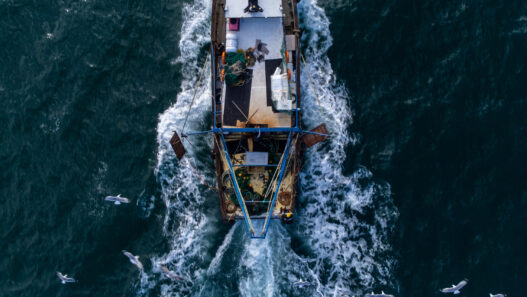The fishing industry, essential for global food supply and coastal community support, is a cornerstone for many small and medium-sized enterprises (SMEs). However, this dynamic sector faces significant challenges related to sustainability, profitability, and regulation, impacting SMEs particularly hard. Here, we dive into a detailed overview to understand the current trends, obstacles, and opportunities for these businesses.
1. International Competition: A Pressured Environment
SMEs in the fishing industry now face heightened international competition. Large fishing corporations, often better equipped and heavily subsidized, dominate the market, limiting space for smaller players. SMEs are often compelled to specialize in niche products or high-quality offerings to stand out. This pressure pushes small businesses to innovate, adopting sustainable practices and highlighting artisanal know-how to remain competitive.
2. Regulation: Both a Constraint and an Opportunity
Marine resource protection laws have increased significantly in recent years. While these regulations are essential for sustainable resource management, they pose a major constraint for SMEs, which often need to reorganize operations to comply with fishing quotas and regulated zones.
However, regulation also opens doors. Businesses adhering to strict sustainability and responsible fishing standards enjoy a stronger reputation, attracting environmentally conscious customers. In France, many SMEs emphasize quality labels and eco-responsible certifications to build customer loyalty and appeal to a broader market.
3. Technological Innovation: A Necessary Investment
To remain competitive, fishing SMEs are increasingly investing in advanced technology. From high-precision navigation systems to selective capture techniques and stock management software, equipment modernization has become essential for optimizing operations.
However, these investments require substantial financial resources, which all SMEs may not have. Businesses must carefully assess which technological solutions can bring the highest return on investment, considering their financial capacity and market strategy.
4. Fishing Quotas: A Valued Scarcity
Access to fishing quotas remains a central issue for small businesses. As marine resources dwindle and quotas become more strictly regulated, SMEs face challenges in ensuring a steady supply. The high cost of certain quotas also limits access to profitable fisheries like tuna or lobster, requiring substantial financial commitments.
Some entrepreneurs focus on less regulated or niche species, while others consider partnerships with companies that already possess quotas. These strategies help ensure the viability of their activities in an increasingly restricted environment.
5. Market Opportunities: Shifting Toward Value-Added Products
With the pressure on resources, many players are turning to high-value-added fishing products. The market for organic products and short supply chains is expanding rapidly, with consumers increasingly willing to pay for traceable, sustainably sourced goods. SMEs in the fishing sector can benefit greatly by promoting quality, transparency, and the origin of their products, leveraging these attributes to stand out in the market.
In conclusion, the fishing sector for SMEs stands at a critical juncture. Though facing increased competition and regulatory constraints, small businesses can capitalize on new market opportunities by investing in sustainable practices and technological innovation. Navigating these changes carefully, SMEs can not only survive but also thrive in an industry where authenticity and quality have become key differentiators.















